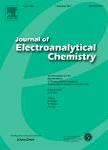版权所有:内蒙古大学图书馆 技术提供:维普资讯• 智图
内蒙古自治区呼和浩特市赛罕区大学西街235号 邮编: 010021

作者机构:Harvard - MIT Division of Health Sciences and Technology Cambridge MA 02139 United States
出 版 物:《Journal of Electroanalytical Chemistry》 (J Electroanal Chem)
年 卷 期:1991年第320卷第2期
页 面:163-182页
基 金:Office of Naval Research ONR (N00014-87-K-0479)
摘 要:We present a quantitative theory of electroporation of artificial planar lipid bilayer membranes. Assuming that aqueous pores are involved in electroporation, we describe the pore population of the membrane by the density function n (r, t), where n (r, t) dr is the number of pores with radius between r and r + dr at time t. We further assume that there is a minimum pore size rmin, that pores of radius rmin are created and destroyed by thermal fluctuations, and that the pore creation rate is proportional to exp(aΔφ2m/kT), where a is a constant, Δφm is the membrane voltage, k is Boltzmann s constant, and T is the absolute temperature. We use a simple formula for the conductance of a pore as a function of radius, the expression for the pore energy previously derived by Pastushenko and Chizmadzhev, and a simple model of the external circuit. We solve the equations numerically and compare the solutions to the results of charge pulse experiments. In a charge-pulse experiment a membrane suffers one of four possible fates: (1) a slight increase in electrical conductance, (2) mechanical rupture, (3) incomplete reversible electrical breakdown, resulting in incomplete discharge of the membrane, or (4) reversible electrical breakdown (REB), resulting in complete discharge of the membrane. In agreement with experiment, this theory describes these four fates and predicts that the fate in any particular experiment is determined by the properties of the membrane and the duration and amplitude of the charging pulse. © 1991.